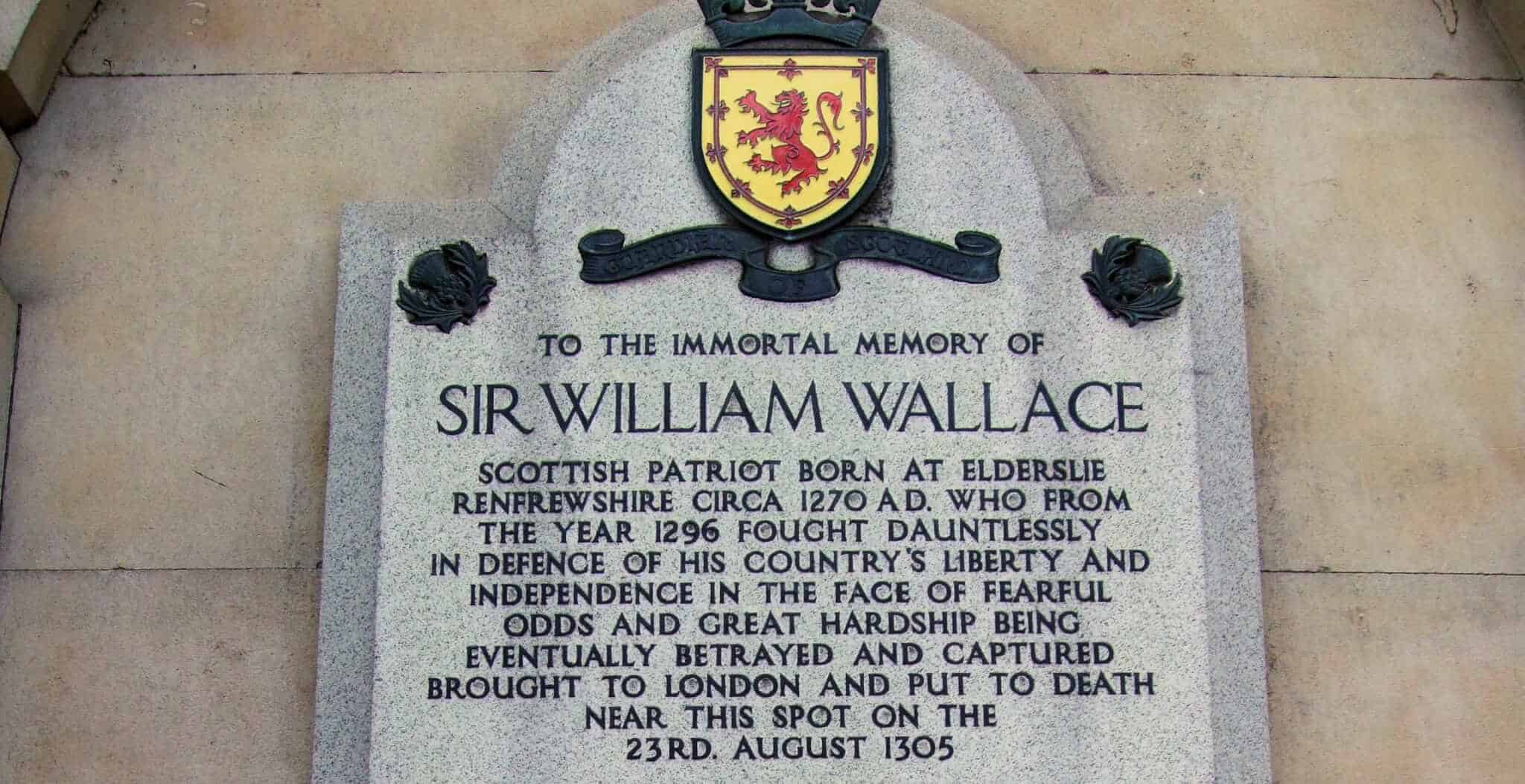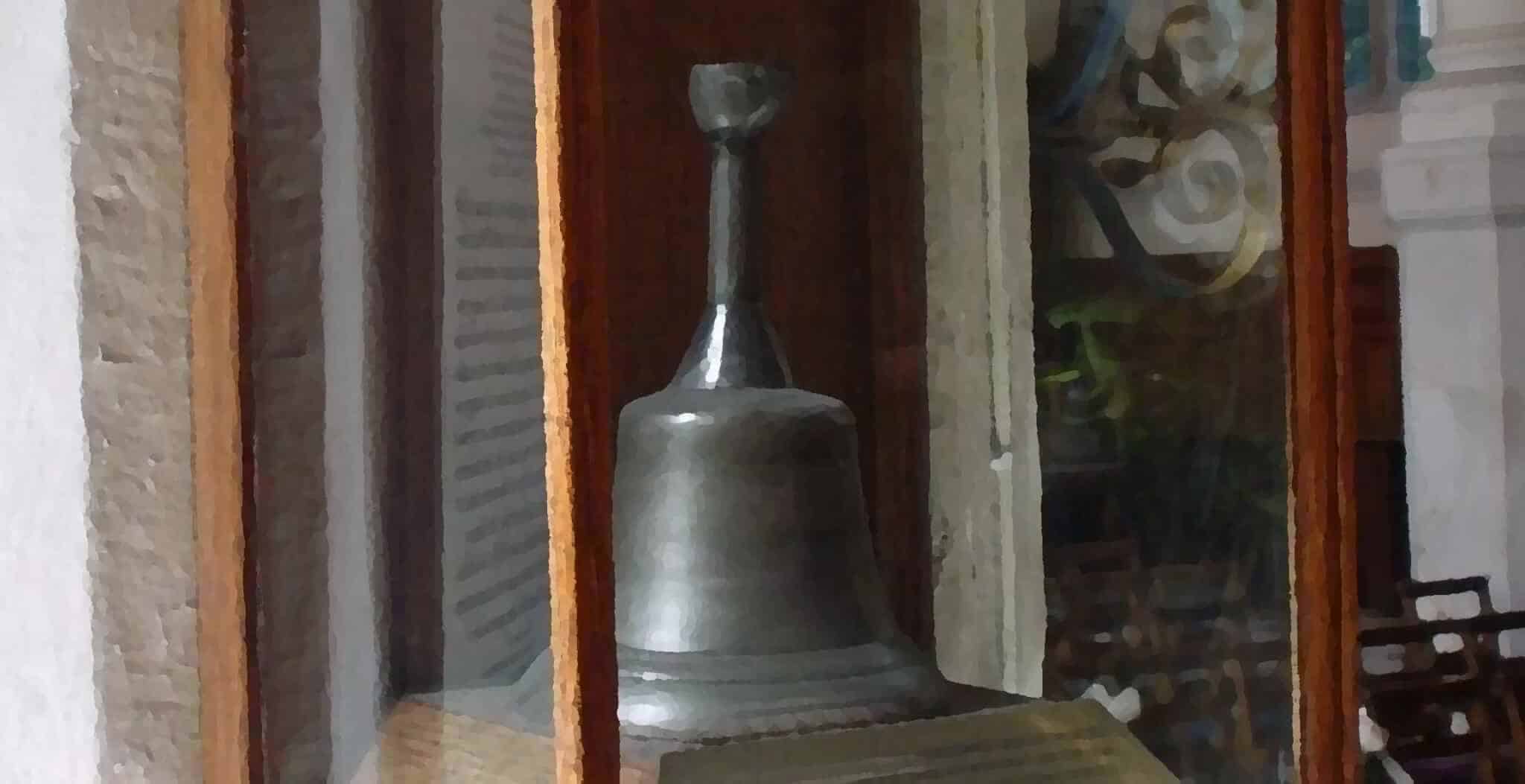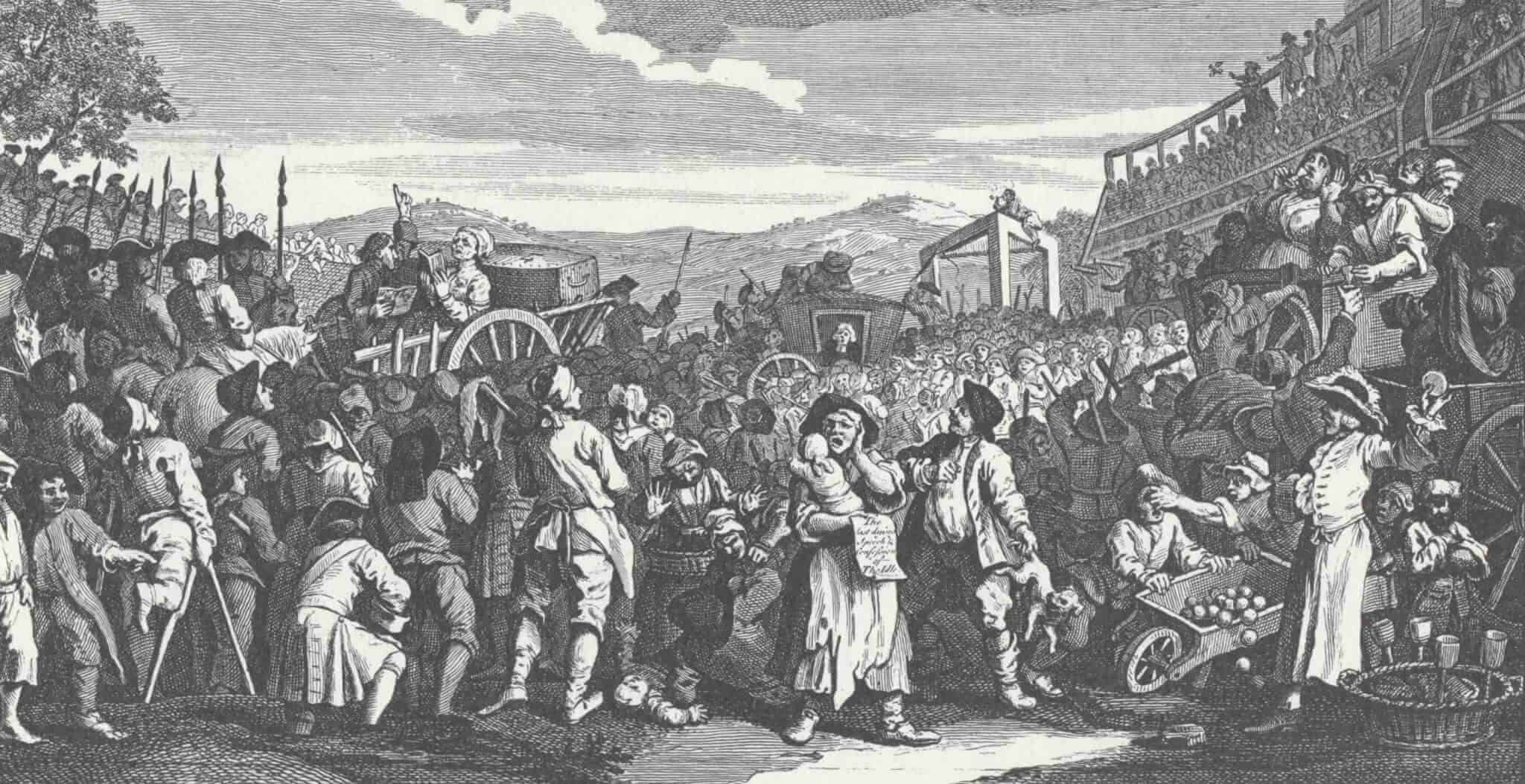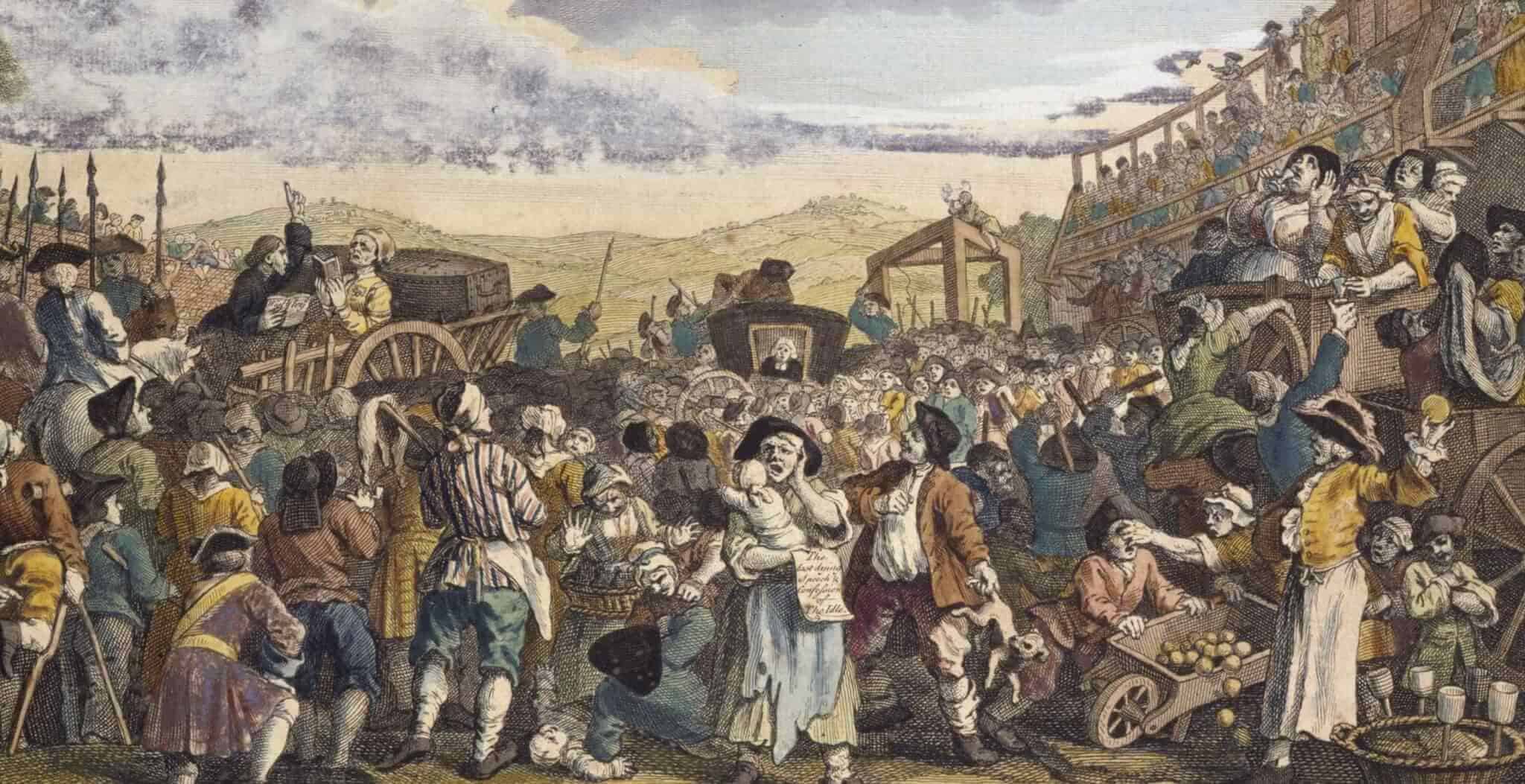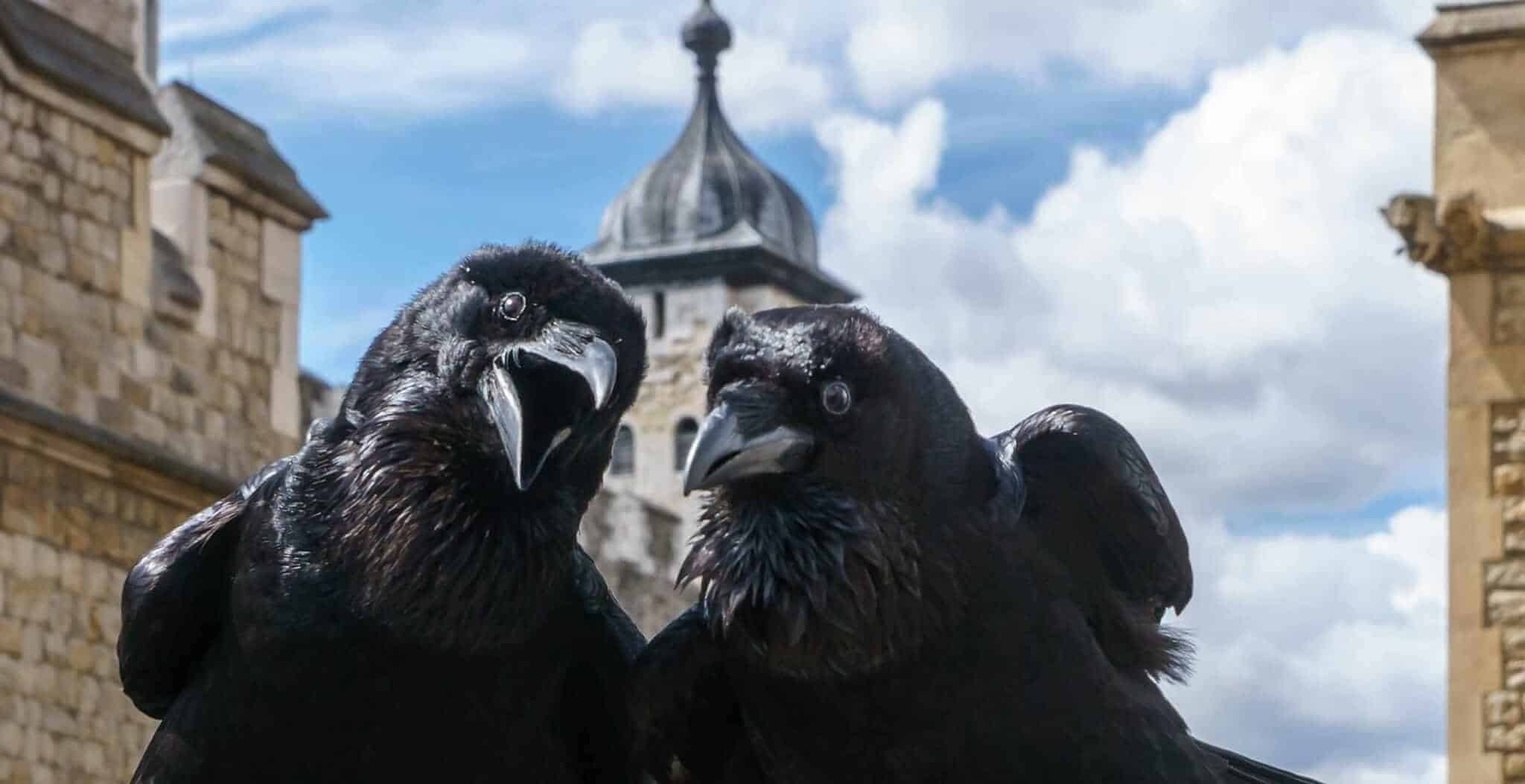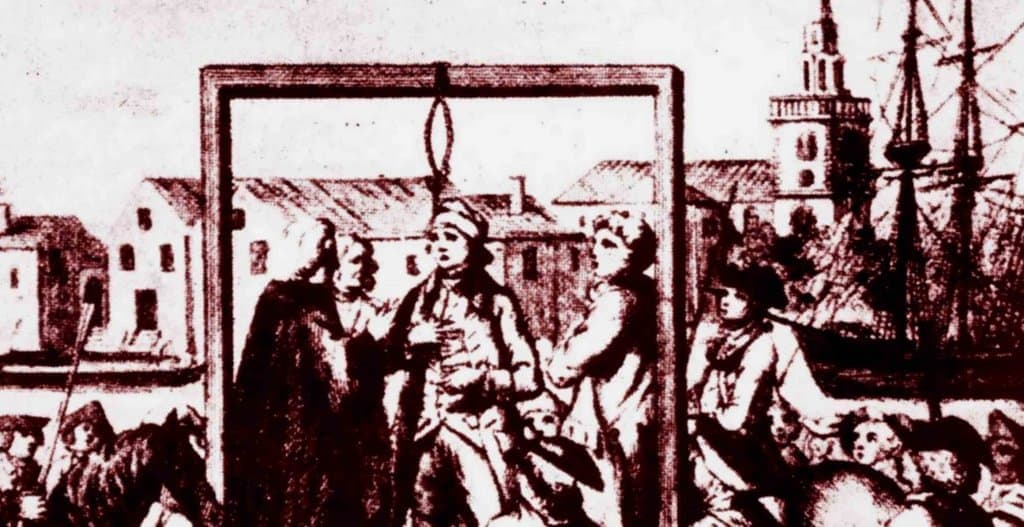During medieval times, Smithfield was one of the most important places in London, full of jousting, livestock grazing, summer fairs and, of course, the occasional execution.
Famous dissenters and heretics who muttered their last breathe at The Elms include William Wallace (of Braveheart fame, who was executed here in 1305) and Wat Tyler, although the latter was only murdered here during a disagreement with the Lord Mayor of London and wasn’t actually executed. In fact, modern day visitors to this area of Smithfield may want to avoid visiting during the hours of darkness as rumour has it that those executed here may haunt it still.
Types of execution at The Elms ranged from burning at the stake (for heretics) to the tried and tested hanged-drawn-and-quartered method for those convicted of high treason. For those unfamiliar with this method, it involves being dragged by a horse to the place of execution, hanged until almost dead, then disembowelled whilst still conscious, beheaded, and finally being chopped into four pieces (i.e. ‘quartered) and subsequently having these pieces put on display across the city.
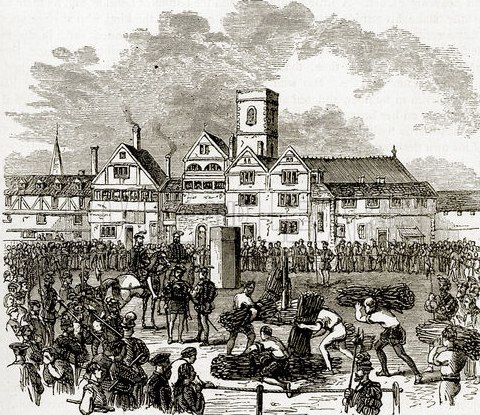
The site of executions at Old Smithfield
In fact, many of the decapitated heads were then taken to the medieval London Bridge to adorn the gatehouse as a deterrent against would-be criminals entering the city.
During the reign of Henry V in the early 1400’s, it is thought that the gallows were removed from Smithfield to nearby Tyburn, a site where public executions would continue for centuries more. The fate of the Elm trees at Smithfield is not known, but by the time of John Stow’s Survey of London in 1598 they had long since disappeared.
Today, this area of Smithfield is a charming place to visit as many of the buildings escaped the Great Fire of London. In fact, the oldest building in the City of London is nearby in Cloth Fair.
The only reminder of Smithfield’s rather gruesome history is a small memorial plaque to William Wallace which we have marked on the map below. It reads:
 To the immortal memory of Sir William Wallace
To the immortal memory of Sir William Wallace
Scottish patriot born at Elderslie Renfrewshire circa 1270 A.D.
Who from the year 1296 fought dauntlessly in defence of his country’s liberty and independence in the face of fearful odds and great hardship being eventually betrayed and captured brought to London and put to death near this spot on the 23rd August 1305.
His example heroism and devotion inspired those who came after him to win victory from defeat and his memory remains for all time a source of pride, honour and inspiration to his Countrymen.
[The remainder is in Latin and Gaelic, but is translated as the following]
I tell you the truth, son, freedom is the best condition, never live like a slave
Death and Victory
Getting here
Smithfield is easily accessible by both bus and rail, please try our London Transport Guide for help in getting around the capital.
